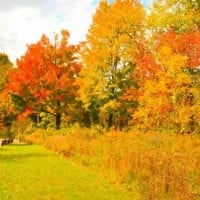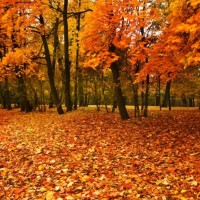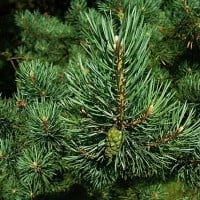Top 10 Fun Facts About Autumn
The season, autumn, also known as fall, is considered by many to be a beautiful time of the year, especially in terms of scenery and activities. Whether it's the fall colors, Halloween, leaf peeping, or Thanksgiving, autumn has something for everyone.In addition to its beauty, autumn is the season known for being the time when certain places get cooler and the days shorten. Not only that, autumn can also be regarded as an interesting season due to the cool facts related to it. This list will discuss facts you may or may not have known related to autumn.

A misconception believed by some is that leaves fall off from deciduous trees due to wind or cold temperature alone. However, the reality is that these trees actively shed their leaves for a specific purpose: to prepare for winter. Leaves are essential for a tree because they produce the food the tree needs to thrive. So why release them? The quick answer is that if leaves were to remain on trees during winter, they would die off due to the cold temperatures, rendering them useless come spring. Consequently, the tree would die, as it would lack the components needed to produce food. Thus, as a procedure for winterization, trees release their leaves. This is facilitated by a hormone produced within them that signals the leaves to fall off. Then, in the spring, trees can regrow new leaves after the cold winter has passed.

Notice the yellow and orange hues in leaves that make autumn scenery beautiful. These are their natural colors. Despite green being the color most commonly displayed by leaves, this green hue is primarily due to the presence of a substance called chlorophyll, which is produced by plants to absorb sunlight. In autumn, as there is less sunlight, leaves produce less chlorophyll, causing the green to fade away. Therefore, leaves don't necessarily "change" colors in autumn. Those colors have been present all along. It's just that conditions in autumn allow the leaves to display those colors. In contrast, during summer and spring, when there is more sunlight, the colors are masked by green due to the production of chlorophyll.
While many people already know that the cause of the four seasons, including autumn, is related to the Earth's axial tilt, ancient Greeks had their own interpretation of autumn. According to Greek mythology, Persephone, the daughter of Demeter (the Goddess of Harvest), was kidnapped by Hades, the God of the Underworld. Consequently, Demeter was devastated by her daughter's absence and took out her anger on the Earth by causing it to become cold and the crops to diminish, marking the beginning of autumn.
Then Zeus negotiated with Hades to allow Persephone to spend part of the year with her mother, Demeter. As a result, Demeter allowed crops to bloom and the Earth to warm due to her joy from her daughter's presence, marking the beginning of spring. However, Persephone was still required to stay in the underworld with Hades for a portion of the year before returning to her mother, causing the cycle of seasons to continue, driven by Demeter's alternating grief and joy.

In 1863, Abraham Lincoln declared a proclamation that Thanksgiving would take place on the last Thursday of November. However, in the midst of the Great Depression, President Franklin D. Roosevelt was concerned that this would hurt the economy due to a shortened Christmas shopping season. As a result, another proclamation was issued, stating that Thanksgiving would take place on the second-to-last Thursday in November.
However, some states opposed this change. Consequently, 32 states celebrated Thanksgiving according to the president's amended date, while the remaining 16 states stuck with the traditional last-Thursday schedule. The debate over when Thanksgiving should be celebrated continued until Congress declared that the holiday would take place on the fourth Thursday in November.
This may come as a surprise, but studies have shown that the environment in which people are born can affect their lifespan. Currently, there isn't a clear reason why this is the case. However, it's possible that babies born in months with colder temperatures may develop stronger immune systems, particularly against the flu and the common cold.

It's noticeable that, unlike deciduous trees, evergreen trees are able to keep their foliage and green color all year long. This is because of the needle shape of their leaves, and they have a wax coating that protects them from cold weather, allowing them to conserve water.
While today "autumn" and "fall" are the dominant names for this season, there used to be an older name: "harvest" (although it was actually spelled "haerfest" during medieval times). The name referred to the time when farmers harvested crops in preparation for winter. As years went by, the term "harvest" lost its context as people started to move into urban areas, leading to the birth of the terms "autumn" and "fall."
Other than the term "autumn," another term to describe the third season of the year was "fall of the leaf," as that is when leaves would fall from the trees. Eventually, the term was shortened to simply "fall."

Yes, the kind of spice that's most commonly popular during autumn is pumpkin spice, right? Considering pumpkins are an icon for autumn. Despite the name "pumpkin spice," it doesn't contain any pumpkin in it. It's actually a mix of a few everyday spices, usually ground cinnamon, ginger, and nutmeg to be exact.
Some trees have leaves that produce a pigment called "anthocyanin," which gives the leaves either a shade of red or purple.